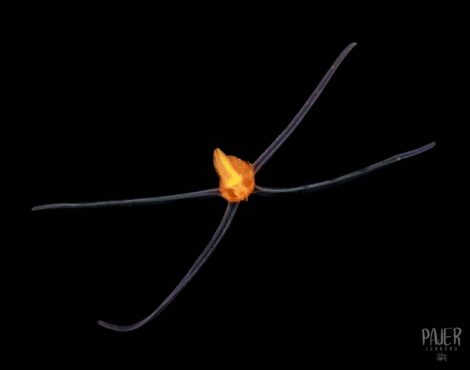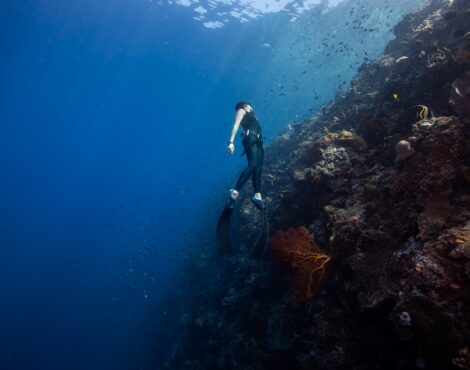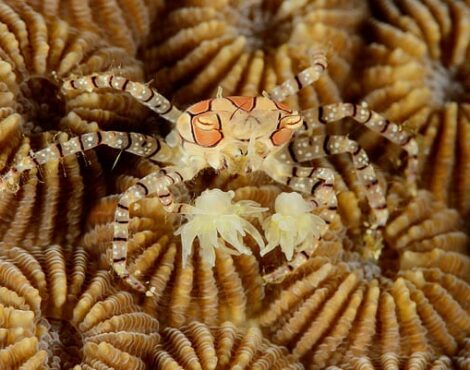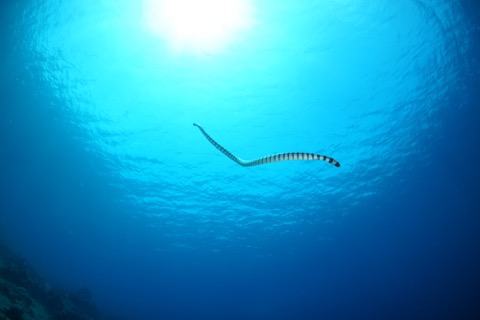
Meet the Banded Sea Krait: A Fascinating Underwater Serpent
If is one creature that can strike fear into the hearts of people from all around the world, it would probably be the snake. Some of them are venomous, some have a nasty bite or can swallow a man whole, but for many people, it is simply the way they move that is so off putting. Although many people may have a fear of land snakes, for most ophiophobes, that fear quickly dissipates when they are underwater and a serpent glides past them. Here at Siladen Resort & Spa, you would be lucky (or unlucky, depending on your stance on the subject) to spot a snake on the land, but on both the colorful walls surrounding the islands, and the muck diving slopes of Sulawesi, sea snakes are a relatively common sight.
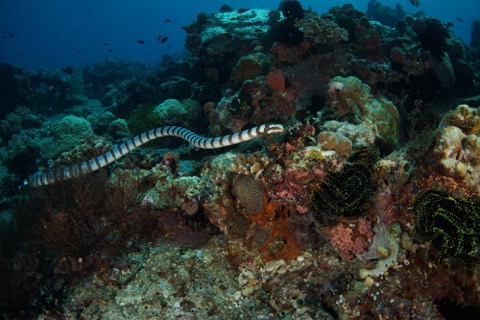
Oviparous Wonders: The Unique Life of Banded Sea Kraits
The main species we spot in Bunaken Marine Park is the Laticauda colubrine, or more commonly known as, the Banded Sea Krait. They are easy to identify with their black bands wrapping around a light blue under colour, a yellow snout, and a flattened paddle like tail for swimming. The Laticaudadiffer from other species of sea snake, as they are oviparous, which means they must come onto land to mate, lay eggs and digest food. A fully grown female has an average length of 150cm, while the male is significantly smaller, being around 100cm. Juvenile banded sea snakes spend almost all of their lives on shallow coral reefs or their adjacent coast, but as they mature into adults, they will head further inland, dividing their time roughly 50/50 between the ocean and land.
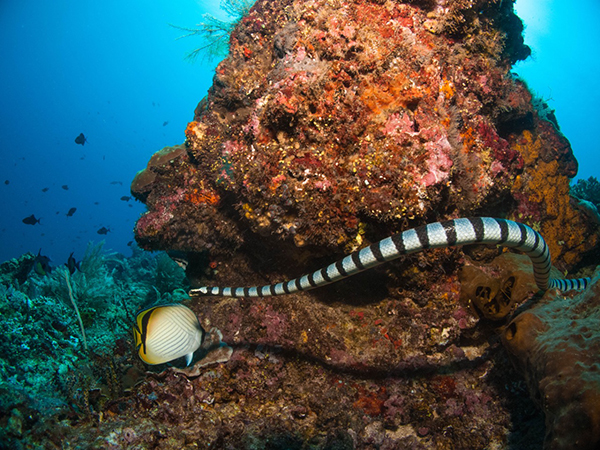
Potent Venom and Docile Nature: The Paradox of Sea Snake Bites
Because they spend a lot of time on land, they frequently interact with humans, however they do not see us at food or a threat, so they tend to just ignore us, only attacking in self-defence if they feel threatened. This is just as well, as their venom is extremely potent, causing cyanosis, paralysis and convulsions. As they are very docile, the number of humans being bitten is very low. Most bites occur at sea when fishermen try to free them after inadvertentlycatching them in their nets or hooks. When one does bite a human, envenomation is very rare, because the venom take a long time to produce and is mostly saved for catching prey, so defensive bites are seldom venomous.
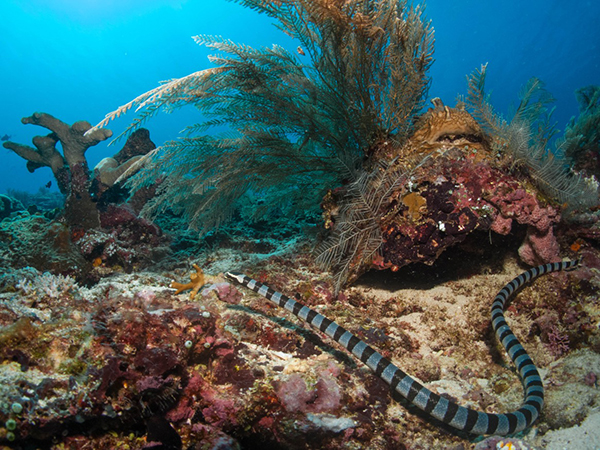
Predators of the Deep: Banded Sea Kraits’ Moray Eel Feas
While they will eat most smaller reef fish, crabs and shrimps, their preferred diet consists of moray eels. Upon discovering a suitable meal, the krait will attack, injecting its prey with its powerful venom, rapidly immobilising it, and the krait will swallow it whole. The krait will now be visibly bloated, and its swimming impaired. For safety, it must head to dry land, away from predators such as larger reef fish, eagle rays, and sharks, so it can slowly digest its meal. Like other marine based reptiles, banded sea kraits have a salt gland to remove excess salt that is absorbed from their diet.
Co-operative Hunting with Banded Sea Kraits: A Strategic Alliance
The banded sea kraits usually hunt alone, however on occasion they will gather and hunt in great numbers in the company of goatfish or giant trevally. The larger predators chase small fish into to cracks and crevices of the reef, where the kraits will follow them to flush them back out. This co-operative hunting can be very effective, clearing a large area of reef fish in only a few minutes.
Diving into the World of Banded Sea Kraits: Enigmatic and Elusive
Divers and snorkelers alike can enjoy these fascinating creatures. The larger females can dive to a maximum depth of 80 metres, however they tend to stay on shallow reef tops, where they can find the most food. Due to their elongated shape and fast swimming, they can be a tricky subject to photograph, however, due to their undulating movement and the way they poke their heads in and out of the reef, they make for fascinating video footage.

